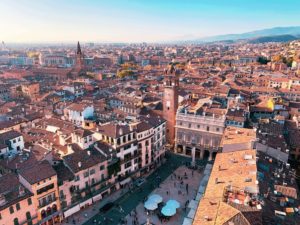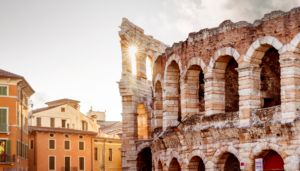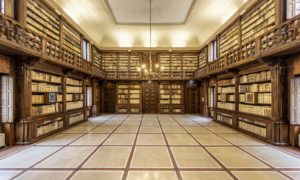3 curiosities and legends about Verona worth knowing
The bomb that hit Piazza Erbe
Piazza Erbe is one of the most beautiful places in Verona and you will often walk across it during your stay in the city. For centuries, it’s been the beating heart of city life and the location of the market. Nevertheless, it was also the scene of a tragic event during the First World War. It was November 14, 1915, when three Austrian planes appeared in the sky and dropped bombs on the square, leaving it damaged. Civilians took refuge under the loggia of the Chamber of Commerce, however 48 people got injured by the shell fragments and 29 died.
In the square you will see a statue on the side of the bombing: it represents Justice.

The legend of the Arena
We all well know the Verona Arena, the symbol of the city. But only a few have heard of the legend about its origins.
In the Middle Ages it was said that, once upon a time, a rich Veronese gentleman was awaiting his death sentence. His screams of desperation were so loud and heartbreaking that they reached the ear of the Devil, who, shortly after, appeared in the cell. The Veronese people had been longing for a theater that could host the whole city. If the theatre construction would have happened by the hand of the condemned, that would have saved his life.
So the Devil made him a proposal: in exchange of his soul, he would have done all the work during the night. The condemned man, seeing no other possibility of salvation, immediately accepted but, as night fell, he was horrified by the infernal demons who began to erect the theater. Thus he began to pray to the Virgin Mary and his prayers were heard: the sun rose earlier, making all the demons flee before finishing the work, which remained forever unfinished.
Hence the origin of the wing of the Verona Arena.

The oldest library in the world is in Verona
Verona’s Capitular Library is the oldest, still running library existing in the world. It preserves a heritage of inestimable value: over 1200 ancient manuscripts, 268 incunabula and 11 thousand parchments have been preserved here for about 1600 years. In confirmation of its primacy, we mention the famous Ursicino Code, dated 1 August 517 AD, which hands down the existence of a scriptorium that was already active in the previous century.
Here are some of the works preserved at the Capitular Library:
- the Raterian Iconography, which is said to be the first representation of a medieval city
- the Purple Evangeliary (or Veronese Code), which contains the four canonical gospels on parchment soaked in purple, with letters in gold and silver
- the Institutions of Gaius, the only almost complete text in the world of Roman law
- the Veronese riddle, which is considered the birth certificate of the Italian language
- the first edition of Saint Augustine’s De Civitate Dei, contemporary to the author
Finally, we would like to remind you that the Capitular Library is open to visitors, with the chance of accessing both an independent visit and, on certain days and times, a guided tour. Our staff will be happy to support you in planning your visit.




